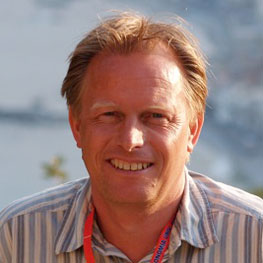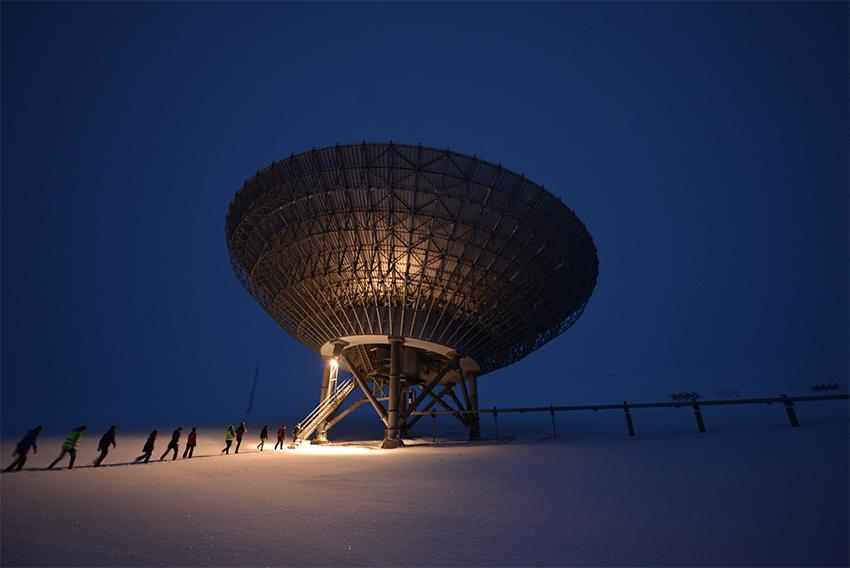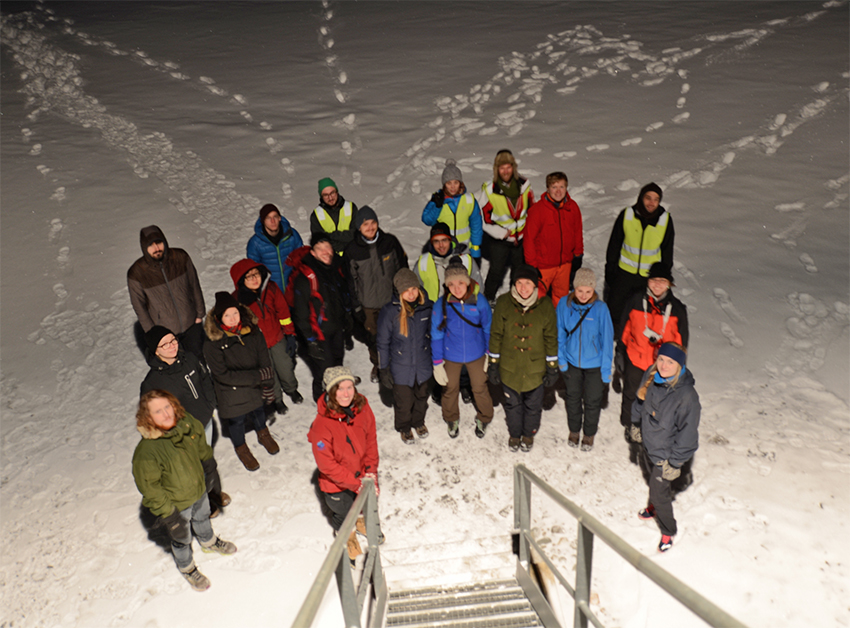AGF-216 The Stormy Sun and the Northern Lights (5 ECTS)
ID:
AGF-216
CREDITS:
5 ECTS
START DATE:
February 12, 2024
END DATE:
February 26, 2024
COURSE PERIOD:
Spring semester (February), evening course

Students at the EISCAT radar, Svalbard, during the UNIS course AGF-216. Photo: Pål Brekke/UNIS
| Grade: | Letter grade (A through F) |
| Course Cost: | None |
| Course Capacity Min/Max: | 5/- students |
| Language of instruction: | English |
| Examination support material: | Bilingual dictionary between English and mother tongue |
Contact person
Course requirements
This course is open to all enrolled students at UNIS, and to the Longyearbyen public. Only UNIS students are allowed to sit the exam and to join the field excursions.
Academic content
The course will give an historic summary of the sun and the northern lights from ancient myths to early science. Brief introductions to the sun, solar activity, solar storms, and modern observations of the sun are also included. How do scientists study the aurora and Earth’s atmosphere today? The course gives a brief overview of the extensive Norwegian scientific infrastructure used to study the Earth’s atmosphere and the effects from the sun. This includes how EISCAT and the Kjell Henriksen Observatory (KHO) is used to study the atmosphere.
Furthermore, the course will explain how solar induced disturbances, called space weather, affect our society. Space weather is a growing research field and the effects are a concern internationally since it can disrupt critical infrastructure that our society depends on. Various aspects of how solar variability can change the Earth’s climate is also included.
Learning outcomes
Upon completing the course, the students will:
Knowledge
- achive knowledge about the myths and historical early science of the aurora
- have a basic understanding of the sun, how events on the sun trigger space weather, including the northern lights and the processes in the Earth’s atmosphere
- know how instruments at KHO and the EISCAT radar is used to study the Earth’s atmosphere
- understand how solar variability may cause climate change and how space weather affects our technology-based society.
Skills
- describe features of the sun and the sun-earth connection, features of the northern lights from myths to modern science and of observing techniques to improve our knowledge
- understand the basics of the EISCAT radar and instruments at KHO
- capture pictures of the aurora.
General competences
- understand and reflect around this part of geophysics and to participate in the discussions related to how the sun affects our society in many ways
- describe modern observing techniques
- use the competence achieved as a building block for other courses within Arctic geophyics.
Learning activities
The course extends over two weeks and is centered on the following learning activities:
- Classroom lectures providing the students with a solid background about the sun and the northern lights as well as observing techniques.
- Field trip to the Kjell Henriksen Observatory and EISCAT to learn about observing techniques and how the observatories are operated.
- Field trip to SvalSat to better understand how solar and earth observing satellites operate and how data is distributed to users and space weather centers around the world.
Summary
- Total lecture hours: 16 hours.
- Total fieldwork/excursion: One evening excursion to Kjell Henriksen Observatory and EISCAT, one evening excursion to SvalSat.
Compulsory learning activities
All compulsory learning activities must be approved in order to sit the exam.
- At least 80% attendance at lectures
Assessment
| Method | Duration |
Percentage of final grade
|
| Written exam | 3 hours | 100% |
Student life

Northern light from excursion to the Kjell Henriksen Observatory
Video by Pål Brekke
From the excursion to EISCAT
All photos: Pål Brekke



